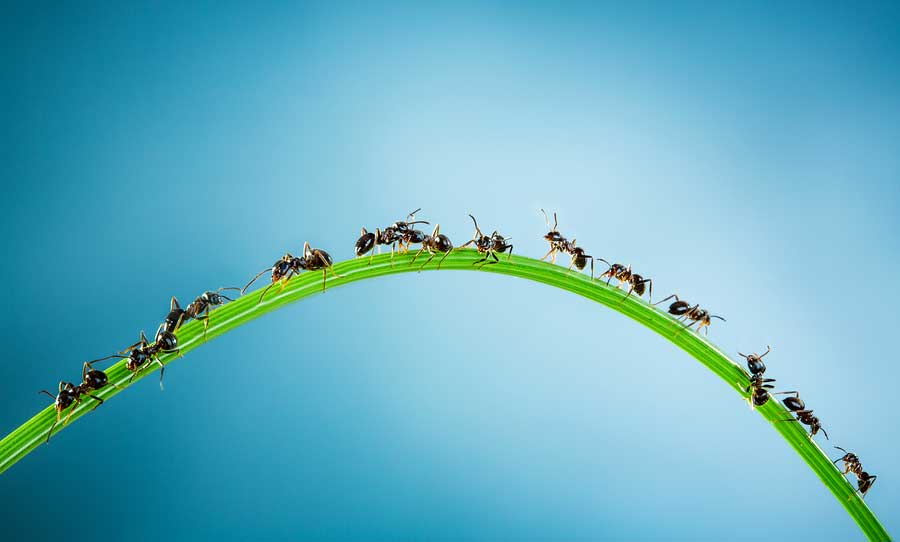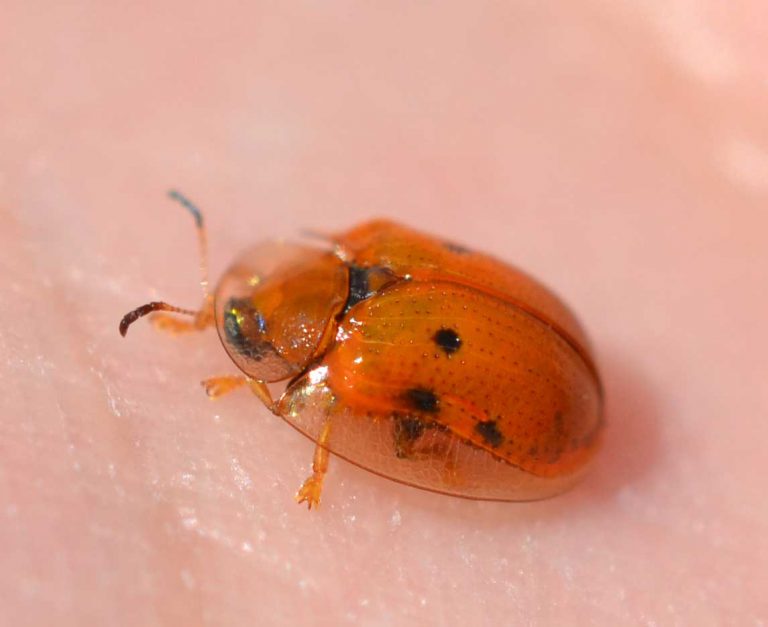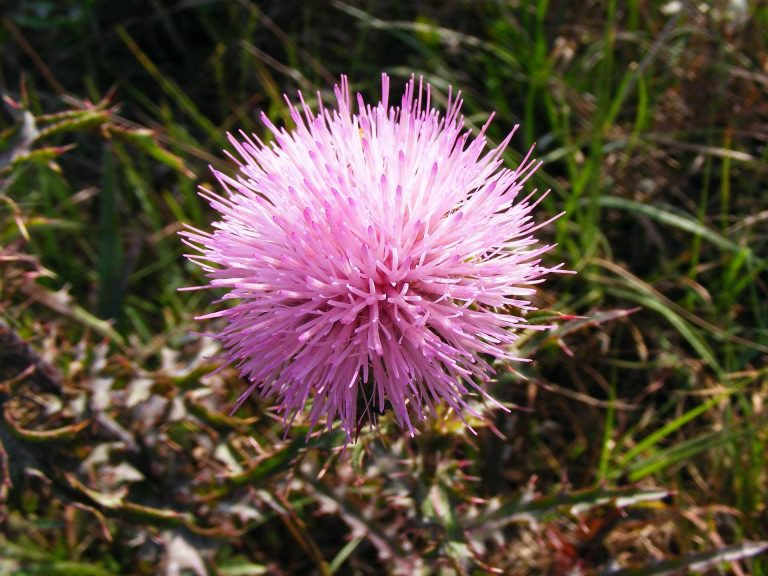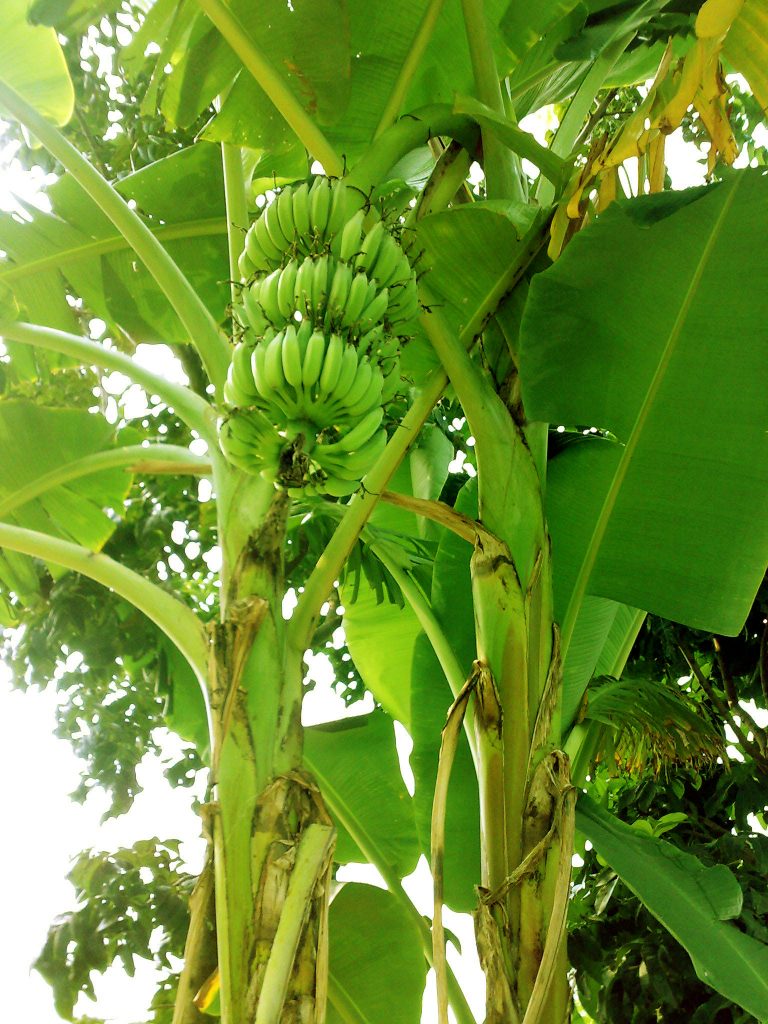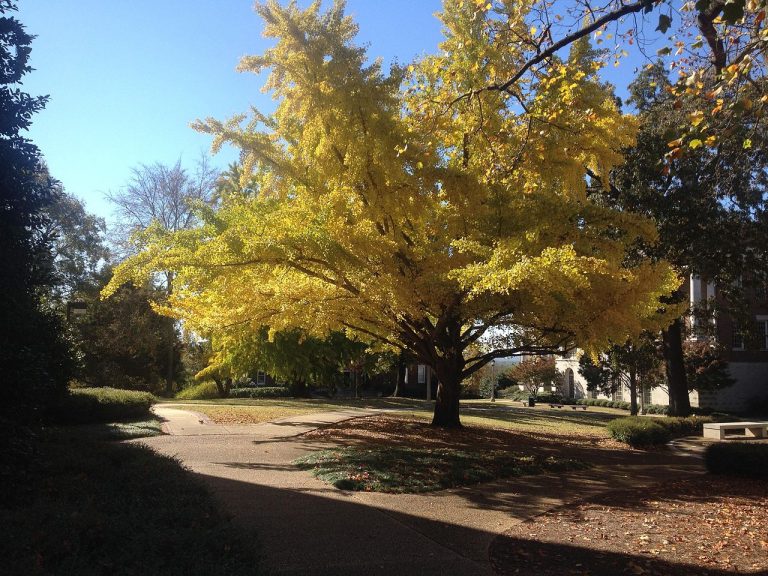Types of Ants
Across the World the Ant Is an Uninvited Guest in Every Home
This insect is invincible. In America, ants are actually considered the number one nuisance. Ants are “eusocial” (or supportive brood care) creatures that belong to the Formicidae family, and together with their counterparts, such as bees and wasps; they belong to the Hymenoptera order. Ant evolution commenced from the wasp during the middle of the Cretaceous era, about 110 to 130 million years before. Following the emergence of the flowering plants, they became distinct.
Out of the 22.000 species over approximately 12,500 were classified. Their elbow shaped antennae and the nodal figure that generates their slim waist is a clear sign of recognizing them.
The most triumphant family of insect that belong to the animal kingdom are the ants, mainly because they are social in their behavior and make superior structured nests or colonies that comprise of millions of individual ants. The species of ants that invade, at times toil collectively and make excellent nests, spread over a vast expanse of land. The description attributed to ant colonies at times, is “superorganism”, the reason being they function as a single unit, but working as a group, jointly in support of the colony.
The colonies that the ants create, can expand from a few dozen ants that dwell between the crevices, to well structured colonies that can accommodate big provinces with millions of ants. In the bigger colonies, most of the ants are sterilized females having no wings, organizing divisions of “soldiers”, workers, or perhaps special divisions. Almost all colonies of ants possess males that are fertile; they are called “drones” and a few females that are fertile, that you call the “queens”.
Since ants dwell in big colonies, what appears as a tiny invasion, turns out as a grievous issue for home dwellers.
Ants have a success story of their own on this planet. The rapid evolution of the ants and their speedy proliferation soon found them occupying every nook and corner of the world as is evident in their diversity that includes the thief ants that are involved in stealing from other nests, to the weaver ants that sew their homes from the leaves on the top of trees.
Some of the different types of ants are as given below:
Citronella Ants
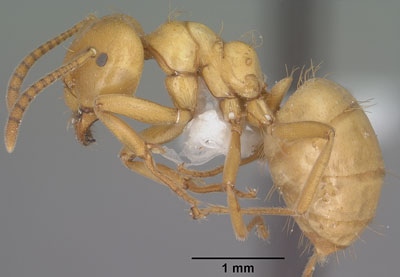
Citronella Ant – Photo by: Jen Fogarty, AntWeb.org
This species of ants release citronella or lemon-like odor, especially when you crush them. The worker ants normally have a yellow color, whereas the winged ants that reproduce have a tendency towards the darker shade. Citronella ants favor aphids, and feed on sweet honeydew emitted by them. The entomologists are not definite whether the citronella ants consume any other source of food. Citronella ants favor attacking homes, particularly at mating time, but they are only an irritant. These ants do not destroy any construction or attack food substances.
Field Ants
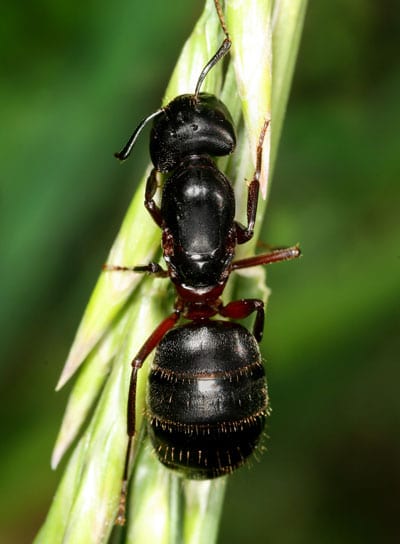
Formica Ant – Photo by: Richard Bartz
This variety of field ants belong to the genus named Formica ants. Their nests are made in the form of mounds in exposed spaces. A variety of field ants, called the Allegheny mound ants, build their nest in the shape of mounds as tall as three feet and of width six feet! On account of this method of mound construction, they can, sometimes, be confused with fire ants that are comparatively smaller in size. Depending upon their species, the field ant’s color can also differ, and they are big or middle sized. The field ants and the fire ants, at times, combine, and together, form marvelous colonies, having worker ants amounting to hundreds of millions that spread over a distance of thousands of miles. The defense mechanism of Formica ants is to bite and emit formic acid, which is a chemical substance that smells as well as irritates the lesion.
Thief Ants
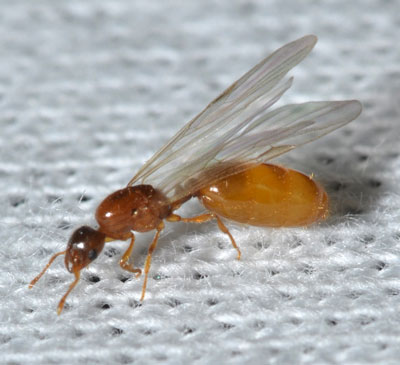
Thief Ant – Photo by: Andy Reago & Chrissy McClarren
Thief ants are normally called grease ants, foraging on food items having high protein such as grease, fat and meats. They acquired the name thief ants, since they steal food and litter from other ant varieties. The thief ants are fairly small in size; they are 2mm long. These ants attack homes in order to forage for food, but always make their nest outside. In case they start dwelling in your homes, doing away with them is a hard task, because, they use their miniature size to compress into unnoticeable spots. Thief ants are often mistaken for Pharaoh ants.
Carpenter Ants
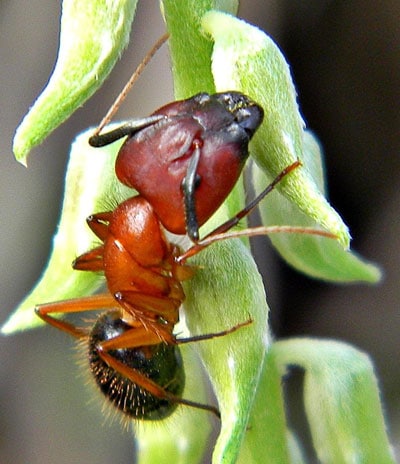
Carpenter Ant – Photo by: Bob Peterson
Carpenter ants are the type of ants that you certainly need seek in your abode. These ants never really consume wood as the termites do, but they dig up tunnels and nests in the lumber structures. Carpenter ants favor damp wood, in case there is either flood or leakage in your residence, beware of their entry. Carpenter ants are not often a nuisance, but they in fact act as a vital agent is the biological cycle of decomposing the lifeless wood. Carpenter ants are omnivorous, and consume anything from lifeless insects to the sap of trees. These ants are big in size; a full length worker ant is ½ inch.
Fire Ants
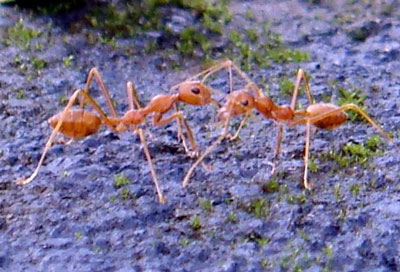
Fire Ants
Fire ants protect their homes violently, they also crowd round any creature they feel a danger to them. The sting or bite of a fire ant makes you feel that you are on fire, for which reason, they are nicknamed, “fire ants’. Those who are allergic to the sting of wasps and bees are allergic to the sting of fire ant too. Even though you find fire ants inhabiting North America, it is those that are imported from South America that create all the problems. The normal places where fire ants build anthills are in sunny and exposed places, hence farms, parks and golf courses are especially susceptible to infestation by fire ants.
Harvester Ants
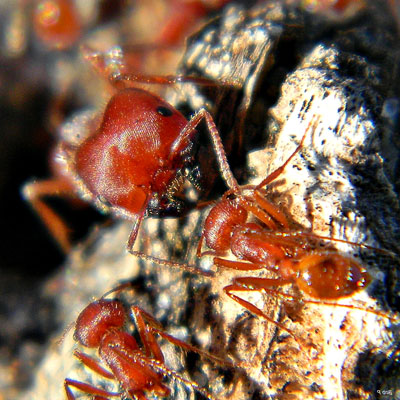
Florida Harvester Ants – Photo by: Bob Peterson
Harvester ants are natives of the prairies and deserts, where they reap food and seeds. They hoard the seeds in the nests that are under the ground. Suppose the seeds are wet, then the harvester worker ants lift the food that they stored, and place them above the ground for drying and prevent from germinating. Grasslands are the places where harvester ants construct their anthills and remove the leaves surrounding the view of their innermost nest. Similar to fire ants, harvester ants safeguard their nests by imposing poisonous stings and bites that are painful. One among the varieties of harvester ants known as Pogonomyrmex Maricopa has the most poisonous of all the venoms ever known among the insect group.
Amazon Ants
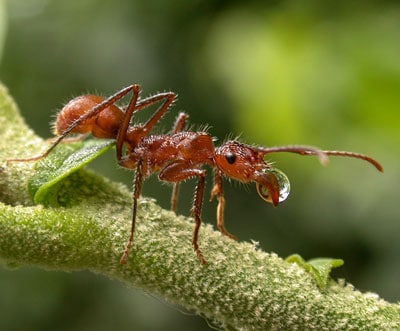
Amazon Ant – Photo by: Alex Wild
Amazon ants are the soldiers of the nasty variety – they march into the other ant’s nest, imprison them and make them work as slaves. The Amazon queen charges the nest in the neighborhood with formic acid and murder the queen residing in it. Unaware of the outcome, the worker Formica ants take up the challenge and begin to care for their newborn Amazon. After the slaves bring up a fresh age group of the worker Amazons, these are charged into the next Formica colony to rob their pupae and take them to their home for adopting as the new age group of slaves.
The Bullet Ant
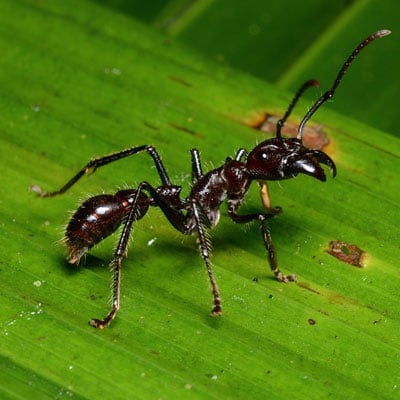
The Bullet Ant – Photo by: Geoff Gallice
Paraponera Clavata, a huge ant from the Amazonian forests, measuring 20 to 25mm is the most notorious of the Amazon ants, and produce an extraordinarily painful sting. Though many guides in the region try to label any large ant as a bullet ant, take note that the true Paraponera is rugged in looks, with two horns topping the thorax, forelegs covered with yellow hairs and retracted antennae in the recessed eyes. These ants prefer to live in the base of the trees, but forage for food in the trees.
Leafcutter Ants
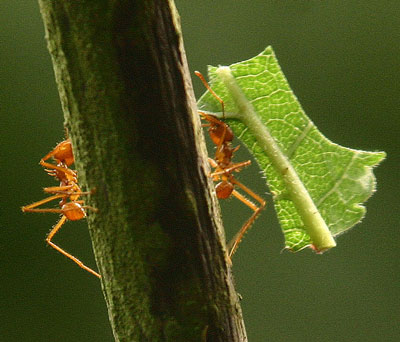
Leaf-cutter Ants – Photo by: Grey Wulf
The fungus gardening ants or the Leafcutter ants were specialists in agriculture quite earlier than man initiated planting seeds. The Leafcutter worker ant clips of bits of plant leaves and take those pieces to their homes underground. Further, the ants munch the leaves and make use of the semi-digested pieces of leaves for the purpose of growing fungus on them, and they feed on that fungus. Besides, in order to suppress the growth of the unnecessary fungi the Leafcutter ants make use of the antibiotics, which are formed from the stains produced by the bacteria of Streptomyces (a genus found in decaying vegetation and soil, releasing natural antibiotics). At the time when the queen starts building a new colony, she takes home with her, a first course of the fungus culture.
Crazy Ants
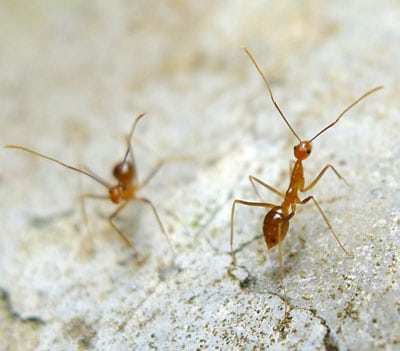
Yellow Crazy Ants – Photo by: Grey Wulf
Quite different from the majority of ants that move along disciplinary lines, crazy ants appear to run about in different direction without any particular aim – just like they are crazy. Their antennae and limbs are long and the hairs on their body are rough. Crazy ants build their homes in the soil where the potted tropical plants are planted. It is difficult to have control over such ants if they enter your homes. These crazy ants prefer crawling into the coolest openings of electronic gadgets for some particular reason, and this leads to a short circuit of equipments, computers and the like.
Odorous House Ants
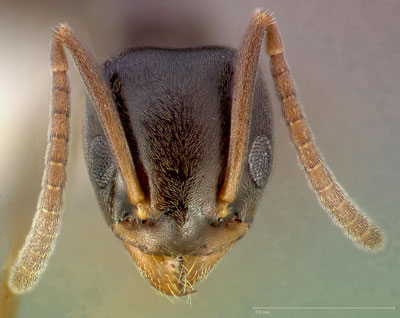
Odorous Ant – Photo by: AntWeb.org
Odorous house ants keep up their name. If the nests of these ants are attacked, they release a butyric acid that has a stinking odor. This stench released by these ants is similar to the smell of decayed coconut or stale butter. Luckily, odorous house ants generally are found outside, they make their homes beneath the mulch, logs or stones. If at all they intrude into your home, they normally are in search of consuming a sweetmeat.
Honeypot Ant
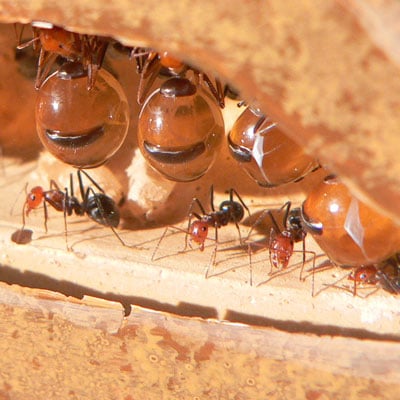
Honeypot Ant – Photo by: Greg Hume
We find Honey pot ants dwelling in dryer regions and deserts. Worker ants, draw a kind of sweet fluid, produced from the hunted nectar and lifeless insects and feed it to particular worker ants called repletes. These “Repletes” are the ones living and performing as the real honey pot They cling to the roof of the nest, and swell up their abdomen like a pouch in the shape of a berry and are capable of carrying honey to eight times the weight of their body.. In times of hardship, the ants in this colony survive using this hoarded food. At times people living in this region where the honey pot ants dwell, eat them.
Army Ants
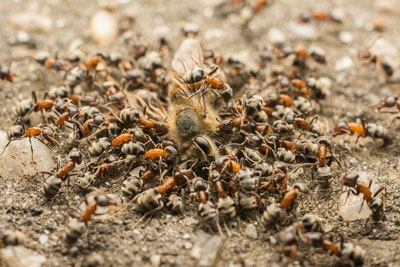
Ants Swarm Eating Dead Bee
Army ants are nomadic. They have no eternal nests,but instead have bivouac nests formed in nests of rodents or crevices found in nature. These are particularly active at night and most of their worker ants are blind. Such carnivorous ants storm at night into the nests of other ants and predate their prey by stinging and violently removing their antennae and limbs. Army ants occasionally stay in their nests without activity. The queen ant then prepares to pupate at the time when she starts laying new larvae and eggs. Immediately after the eggs are hatched and new worker ants come out of the colony, it is on the move again. At this time worker ants carry the young ones in the colony. However, contrary to the common perception, the majority of the army ants are comparatively not harmful to mammals, even though they bite. In the continent of South America they call the army ants as “legionary ants,” but in the continent of Africa they are called “driver ants.”
Argentine Ants
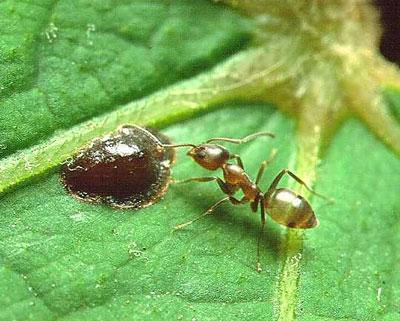
Argentine Ant
The color of the Argentine ants is deep brown and their size varies from 1/16th to 1/4th of an inch. You can find this variety mainly all along the southeast parts of the United States. The colonies of the Argentine ants are situated in wet surroundings adjacent to food sources. These Argentine ants are not harmful to human health.However, they can contaminate food items and emit a foul smell when crushed.
Pavement Ants
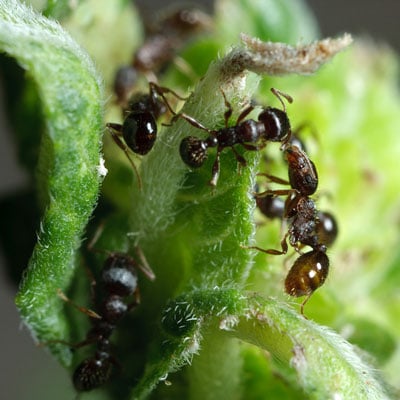
Pavement Ants
The color of the pavement ants ranges from deep brown to black, and they are about 1/8th of an inch long. We find them all along the United States. The pavement ants derived their name because of the fact that they build their nests below the crevices in the pavements. They damage building by forcing themselves through the crevices in the concrete.These black pavement ants are not harmful to human health, but can contaminate food, which is reason enough to steer clear of them.
Flying Ants
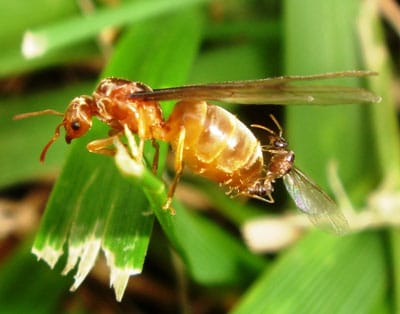
Flying Ants – Photo by: Dave Parker
Flying ants are characteristic; they do not belong to a particular breed and are the ants that we see daily. They belong to the category of ants that live a short life flying about, in what is called the “nuptial cycle.” A few of the male ants along with the queen ant fly to reach the area where they mate. After mating the males die. The queen in particular will set up a fresh colony along with some winged females that ultimately will become queens and male ants as tools for fertilization. A majority of the flying ants are males, because they serve the purpose of fertilizing the queens.
Pharaoh ants (Monomorium pharaonis)
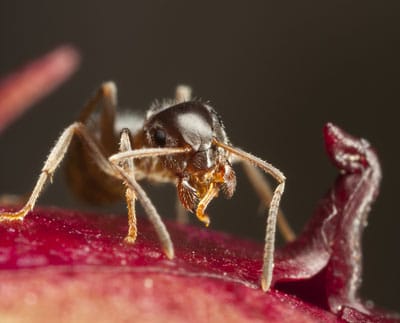
The Pharaoh ants, zoologically named Monomorium Pharaonis is an ant that has a pale brown or yellow color. It is a tiny, measuring only 2 mm in length and more or less transparent. They are infamous as a pest that creates a nuisance in homes, mainly in hospitals. The origin of the Pharaoh ants is not known, but of late they have established in almost every part of the world inclusive of the Americas, Europe, South East Asia and Australia. This variety is called polygynous, which means there are many queens in every colony, which leads to exceptional movements in the colony and interaction between castes.
Monomorium Pharaonis have exclusive foraging habits replete with complicated trail routes which they maintain with many pheromones.
Queen Ants
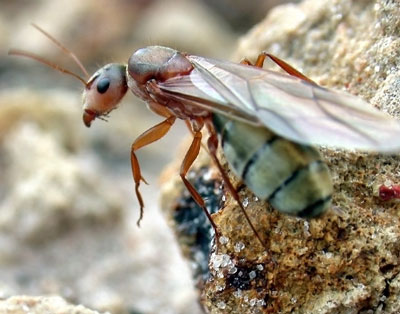
An adult that reproduces female ants in a colony of ants is called a queen ant. Normally she becomes the mother of the rest of the ants in that colony. Certain female ants never mate to produce offsprings. They reproduce by means of cloning or asexual parthenogenesis, and all the newborn turn out as females. The other ants that belong to the genus Crematogaster, mate in a nuptial flight.
Acacia Ants
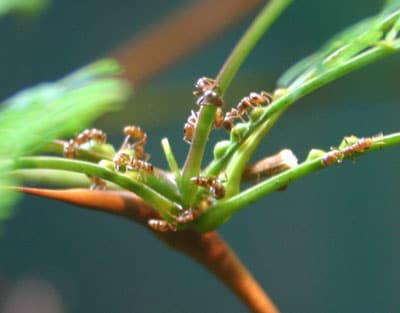
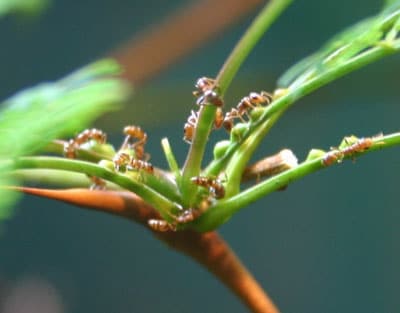
Acacia Ant – Photo by: Ryan Somma
Acacia ants got their name from their symbiotic relationship with the acacia trees. Living in the tree’s hollow thorns, they eat the particular nectar available at the base of the leaves. In return for the food and shelter that they obtain from the tree, these acacia ants will strongly protect their host tree from the herbivorous animals. Besides these acacia ants also prevent new parasitic plants to develop on the acacia tree, by pruning off the parasites in a timely manner.
Trap Jaw Ants
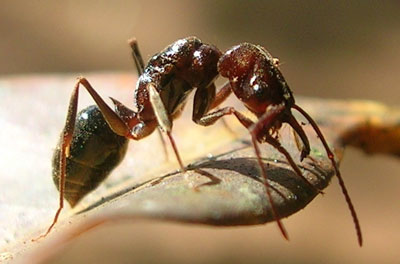
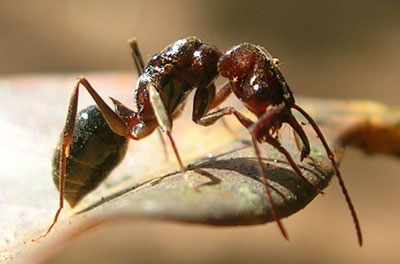
Trap Jaw Ant – Photo by: L. Shyamal
The trap jaw ants lock their mandibles at an angle of 180 degrees for foraging and their mandibles have forward pointing trigger hairs pointing towards their potential victim. When the sensitive hairs sense another insect while brushing against it, the Trap Jaw Ant, bangs its jaws in a lightning effect. Experts have determined the speed of their jaws as 145 mph! When a trap jaw ant encounters danger, it lowers its head downwards, closes its jaws and rotates itself out of danger’s way.
Acrobat Ants
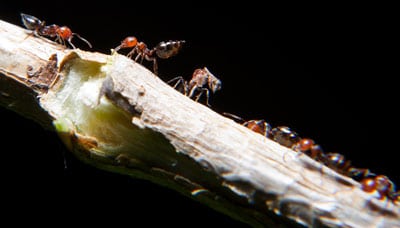
Acrobat Ants
When predators threaten acrobat ants,they will first lift their abdomen, which in the shape of a heart. They will not retreat, but will pounce towards the predator and bite them. The diet of the acrobat ant is sweet material, inclusive of the honeydew that the aphids secrete. It is with the pieces of plant that they build their barns over the aphid “cattle“. Occasionally the acrobat ants dwell indoors, particularly in places which are always moist.
Weaver Ants (Oecophylla)
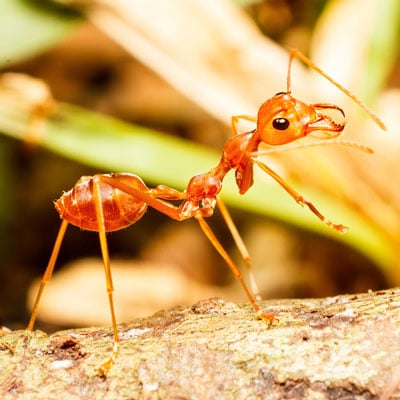
Red Weaver Ant
The weaver ants weave leaves jointly to build their complicated nests on the top of the trees. The worker ants start their construction by pulling the edges of the flexible leaves together with their jaws. The remaining workers transport the larvae to the site of construction and apply a slight squeeze using their mandibles, by which action the larvae extrude silken threads. The worker ants use these threads to join the leaves together. As time passes, these nests connect many trees together. Similar to the acacia ants, the weaver ants also defend the host tree from their predators.

Having discovered a fondness for insects while pursuing her degree in Biology, Randi Jones was quite bugged to know that people usually dismissed these little creatures as “creepy-crawlies”.

